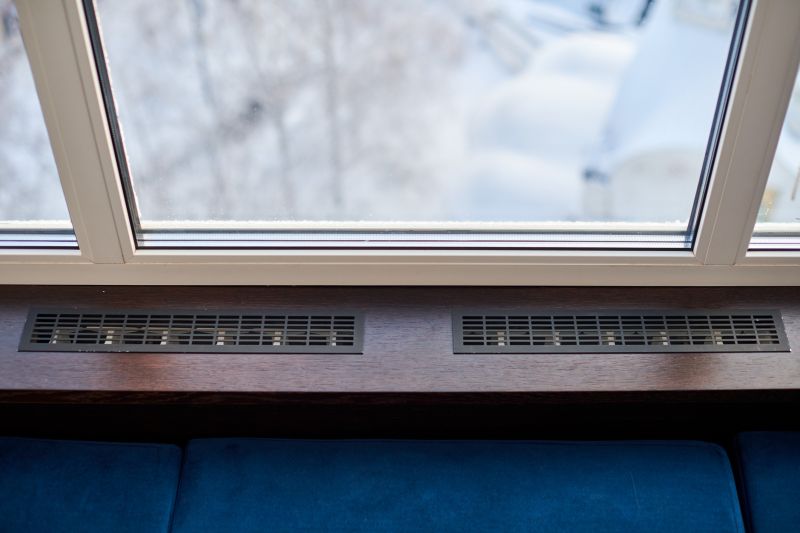Expert Picks For High-Quality Baseboard Heater Replacements
Find out which replacement products professionals recommend for durability and consistent heating performance.
 Replacing a baseboard heater involves selecting the right type of product that fits the specific heating needs and space constraints of your room. There are various options available, ranging from traditional hydronic models to electric units that can be easily installed in existing spaces. When choosing a replacement, it is important to consider factors such as size, heat output, compatibility with existing wiring or plumbing, and installation requirements. Proper selection ensures efficient heating performance and helps maintain a comfortable environment.
Replacing a baseboard heater involves selecting the right type of product that fits the specific heating needs and space constraints of your room. There are various options available, ranging from traditional hydronic models to electric units that can be easily installed in existing spaces. When choosing a replacement, it is important to consider factors such as size, heat output, compatibility with existing wiring or plumbing, and installation requirements. Proper selection ensures efficient heating performance and helps maintain a comfortable environment.
Top Overall Option
Electric Baseboard Heater
Electric baseboard heaters are a popular choice for their straightforward installation and maintenance. They operate by converting electrical energy into heat, providing a clean and quiet heating solution. These units come in various sizes and wattages, allowing for customization based on room size and heating needs. They typically feature adjustable thermostats for precise temperature control and are compatible with standard electrical outlets, making them suitable for DIY replacement projects.
Types of Products For Baseboard Heater Replacements
Hydronic Baseboard Heaters
These units use hot water circulated through pipes to generate heat, offering a steady and even warmth distribution. They often require professional installation due to plumbing connections.
Electric Baseboard Heaters
Electric models are easy to install and operate, making them a common choice for quick upgrades and replacements.
Hydronic Panel Radiators
Similar to traditional baseboards but with a panel design, these radiators provide efficient heat transfer and a sleek appearance.
Infrared Baseboard Heaters
These heaters emit infrared radiation that warms objects and people directly, rather than heating the air.
Thermostatic Baseboard Units
Equipped with advanced thermostats, these units allow for precise temperature management and energy efficiency.
Portable Baseboard Heaters
Movable units that can be repositioned easily, suitable for supplemental heating or temporary needs.
Wall-Mounted Panel Heaters
Slim and space-saving, these are mounted directly on walls for a modern look and efficient heating.
Low-Profile Baseboard Heaters
Designed to sit close to the floor, these units are ideal for rooms with limited space or specific aesthetic preferences.
Smart Baseboard Heaters
Integrated with Wi-Fi connectivity, these heaters can be controlled remotely via smartphone apps.
Hydronic Floor Radiators
Floor-mounted units that provide radiant heat, often used in conjunction with baseboard systems.
Electric Convector Heaters
These units use convection to circulate warm air, suitable for quick heating of small to medium spaces.
Baseboard Heater Covers
Decorative covers that enhance appearance and safety of existing baseboard units.
Replacement Thermostats for Baseboards
Upgrading thermostats can improve control and efficiency of existing heating units.
Popular Choices
Widely used for their ease of installation and operation, suitable for various room sizes.
Known for providing consistent heat, often preferred in colder climates.
Popular for their space-saving design and modern appearance.
Favored for precise temperature control and energy efficiency.
Chosen for direct heat emission and quiet operation.
Increasingly popular for remote control and automation features.
Convenient for supplemental heating in specific areas or temporary use.
Preferred in rooms with limited space or specific aesthetic needs.
Selected for their sleek design and effective heat distribution.
Modern replacement options often feature improved safety features, user-friendly controls, and versatile designs that blend with different interior styles. Some units are designed for quick installation, making them suitable for DIY projects, while others may require professional assistance to ensure proper setup. It's also beneficial to consider the maintenance needs of the product, as some models offer easier access for cleaning or repairs.
The right product can enhance the functionality of your space by providing consistent and reliable heat. Whether you're upgrading an old unit or installing a new system in a renovated area, understanding the available types and their features can help you make an informed decision. Always verify compatibility with your existing heating setup and consult installation guidelines to ensure optimal performance and safety.
Key Buying Considerations
- Room size and heating requirements to determine appropriate wattage.
- Compatibility with existing electrical wiring or plumbing systems.
- Ease of installation, especially if considering DIY options.
- Safety features such as overheat protection and tip-over switches.
- Thermostat precision for consistent and controllable heating.
- Design and aesthetic integration with your room decor.
- Maintenance requirements and accessibility for cleaning or repairs.
- Energy efficiency features to optimize power consumption.
- Noise levels during operation for a comfortable environment.
- Availability of replacement parts and accessories.
- Control options including manual, programmable, or smart controls.
- Material quality for durability and long-term performance.
- Size and profile to ensure proper fit within your space.
- Brand reputation and customer reviews for reliability insights.
- Warranty and support services offered by the manufacturer.
